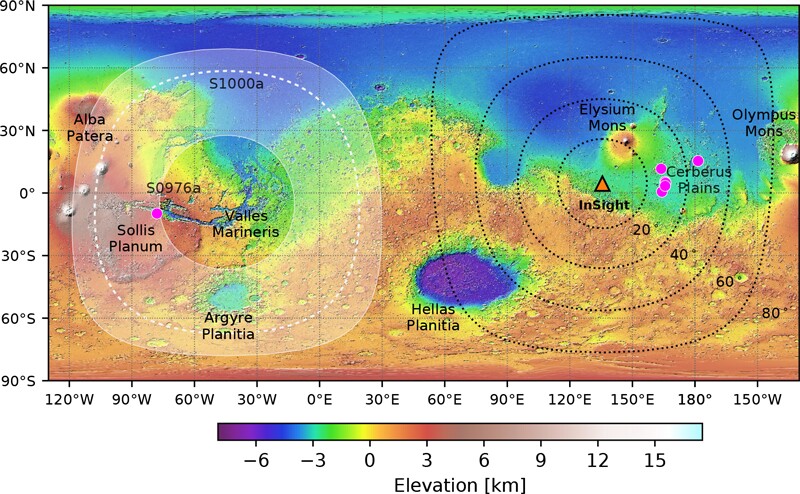NASA’s InSight lander has recorded the two strongest quakes detected so far on Mars, with both measuring over magnitude 4. These seismic events rolled in from the far side of the Red Planet, and one also clocked the record for longest marsquake.
InSight’s instruments have detected over 950 Martian seismic events since the first was recorded in April 2019, giving scientists an unprecedented look at the planet’s interior, from crust to core. But the new detections mark several firsts in the program.
An event designated S0976a was detected on August 25, 2021 and registered a magnitude 4.2. Another, designated S1000a, followed on September 18 with a magnitude 4.1, making the pair about five times more powerful than any previously detected marsquake. The second quake was also the longest recorded so far, lasting 94 minutes.
The two events also traveled much farther than any other marsquakes detected to date. All other events have so far originated from within a radius of 100 degrees of InSight, but these two came from the opposite side of the planet.
The epicenter of S0976a was traced to a huge network of canyons called Valles Marineris. Images taken from orbit have previously revealed features that suggest the region is seismically active, but this is the first confirmed quake from the area. The precise origin of S1000a couldn’t be pinpointed, except to say that it also came from the far side.

Horelston et al. (2022) TSR
Because of their location on the other side of the world from InSight, the core of the Red Planet would have blocked the direct seismic waves, known as P and S waves, that are usually detected from closer events. Instead, the instrument picked up PP and SS waves, which have been reflected off the surface at least once before bouncing back to the sensor. The depth of each quake can also be calculated from the frequencies of the waves.
“S0976a looks like many of the events we have located to Cerberus Fossae – an area of extensive faulting – that have depths modeled to be around 50 km (31 miles) or more and it is likely that this event has a similar, deep, source mechanism,” said Anna Horleston, corresponding author of the study.
S1000a, however, has a much broader spectrum of frequencies to its waves, which the team says makes it “a clear outlier in our catalog.”
These new detections will help scientists better understand the seismology of Mars.
The research was published in the journal The Seismic Record.
Source: Seismological Society of America
Source of Article